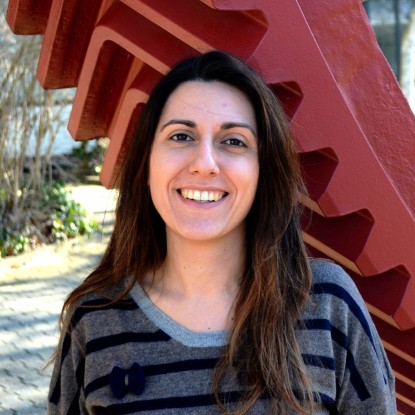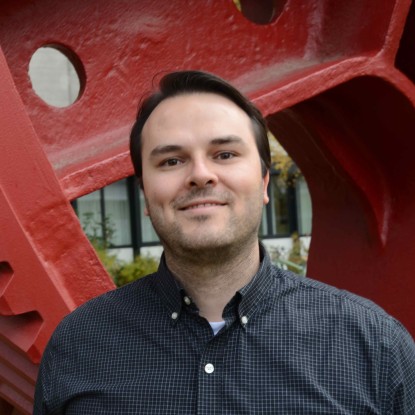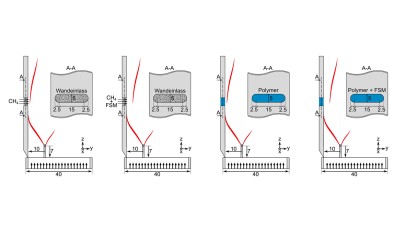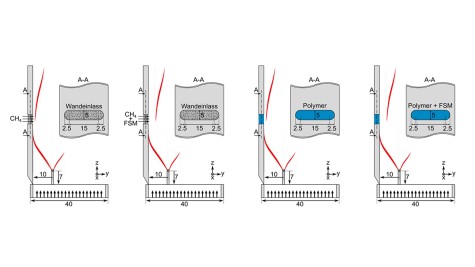Team
| Name | Contact | |
|---|---|---|

| Jun.-Prof. Dr.-Ing. Federica Ferraro | federica.ferraro@tu-braunschweig.de +49 531 391 94230 Raum 210 |

| Dr.-Ing. Arne Scholtissek | scholtissek@stfs.tu-... +49 6151 16-24143 L1|01 294 |

| Raúl Felipe Corrales Flores M. Sc. | corrales@stfs.tu-... L1|01 |
Motivation
The aim of this subproject is to gain a comprehensive understanding of the effect of flame retardants on boundary layer flames. In particular, the effect of flame retardants on the thermochemical state, flame structures and flow dynamics will be investigated. Numerical models and experience from previous funding phases will be applied and extended to the novel flame configuration. This includes REDIM reduced reaction models and advanced models to describe the transport-reaction processes near the wall. The numerical simulation approaches will be validated against experimental data.
Objectives
The objectives of this project consist in conducting numerical simulations focused on non-premixed boundary layer flames on vertical active walls treated with phosphorus-based flame retardants (FR), a key aspect of the CRC/Transregio 150 in the third funding period. Collaborating closely with C06, the aim is to comprehensively understand the impact of FR on these flames. The subproject addresses key scientific questions:
- Exploring the effects of gaseous flame retardants on thermochemical states and flow dynamics.
- Investigating the influence of near-wall momentum, heat, and mass transport.
- Assessing the impact of turbulent flow on flame retardant effectiveness.
- Studying changes in flame structures and thermochemical states with the integration of polymers into active walls.
- Examining the effect of flame retardant additions to polymers on boundary layer flame dynamics.
The project primarily concentrates on devising an appropriate configuration for laminar and turbulent boundary layer flames on active walls. Collaborations with experimental projects (C06, C08) and a numerical project (B05) ensure a comprehensive approach, with a specific focus on the evaluation of wall functions and models for turbulent boundary layers in cooperation with B02 and B03.
Previous Findings
The research by Steinhausen et al. (2023) integrated experimental and numerical approaches to investigate partially premixed laminar methane-air flames undergoing side-wall quenching (SWQ). Utilizing a well-established SWQ burner, the study introduced additional gaseous products from a wall inlet near the quenching point, resulting in a boundary layer of enriched mixture at the wall. Planar laser-induced fluorescence measurements of OH radicals were complemented by fully-resolved transport and chemistry numerical simulations. The analysis revealed a reaction zone parallel to the wall for high injection rates. Subsequent numerical studies introduced dimethylmethylphosphonat (DMMP), a phosphor-based flame retardant, into the wall inflow. Increasing DMMP content leds to flame stabilization away from the wall, reducing the local heat-release rate and significantly lowering the maximum wall heat flux. This effect contributed to a decreased thermal load on the quenching wall.
Flame structure analysis identified the accumulation of intermediate species HOPO at the wall, akin to CO accumulation during premixed flame quenching without flame retardant addition. The study contributes valuable insights into how the structure of partially premixed flames is influenced by walls releasing additional fuel or a combination of fuel and flame retardant, enhancing understanding of the combined effects of flame retardants and heat losses in near-wall flames.
Approach
The flow configuration in C06 is an advancement of the Sidewall-Quenching Burner from A04 in the second funding period of SFB/Transregio 150, while C07 builds on C03's work in the second funding period, enhancing modeling approaches for a new leading example. Key methods include fully resolved 2-D simulations for laminar boundary layer flames under phosphorus-based flame retardants, wall-resolved LES, and wall-modeled LES for turbulent boundary layer flames influenced by flame retardants. OpenFOAM serves as a common platform across projects, allowing efficient model transfer. Collaboration with C03 is integral, leveraging models from the first and second funding periods. Model extensions are crucial for flame retardant reaction mechanisms, active wall modeling, and polymer representation. The subproject addresses specific challenges, such as implementing solid phase properties of polymers and defining release rates for gaseous products in polymer combustion, collaborating with C08N and B05, respectively. The focus remains on scientific advancements in flame-wall interaction and polymer modeling.
Current Work
Detailed and Reduced reaction mechanisms have been employed for simulations involving flame retardants. Our recent simulations have tested the impact of gaseous phosphorus-based flame retardant (FR) gradually mixed into the fuel stream, examining its influence on the boundary layer flame structure, particularly the thermochemical state near the wall. Additionally, we have been analyzing the influence of the active wall on boundary layer flames. Inlet conditions have been varied similar to the experiments (C06), and their effects on momentum, heat, and mass transport have been analyzed and evaluated. Numerical data has been validated (without DMMP) against measurements from C06, providing additional insights into parameters not directly accessible through experiments. This combined approach has enabled a comprehensive quantification of momentum exchange, heat transfer to the wall, and mixing processes.
Cooperation
Project C07 collaborates closely with several other projects within the CRC/Transregio 150, fostering a multidisciplinary approach to address the complexities of flame retardant effects on boundary layer flames. Leveraging expertise from C03, established numerical models and experiences are transferred and expanded to analyze the novel flame configuration. The collaboration with B03 involves the integration of models specific to turbulent boundary layer flames into the simulation of the exemplary case, enriching the understanding of complex flame dynamics. Additionally, the project benefits from the chemical insights provided by B06, using reduced manifolds to describe the reaction mechanisms and kinetics of phosphorus-based flame retardants in both gas phase and on polymer surfaces. Experimental data from C06 play a crucial role in validating the numerical models employed by C07, contributing to a more robust and reliable understanding of flame retardant effects. Moreover, collaborative efforts with C08 extend the research into fire safety, ensuring a holistic investigation that bridges the gap between flame retardant research and practical applications in ensuring fire safety. The coordinated teamwork among the mentioned subprojects ensures a thorough investigation into the complex relationship between flame retardants and boundary layer flames.




